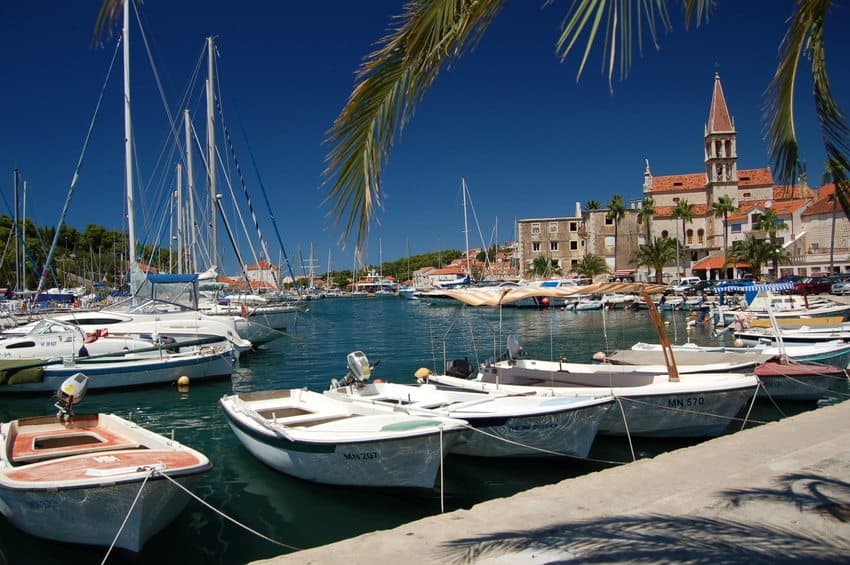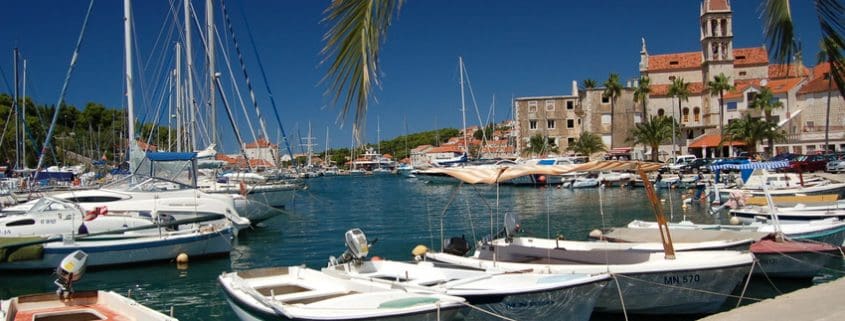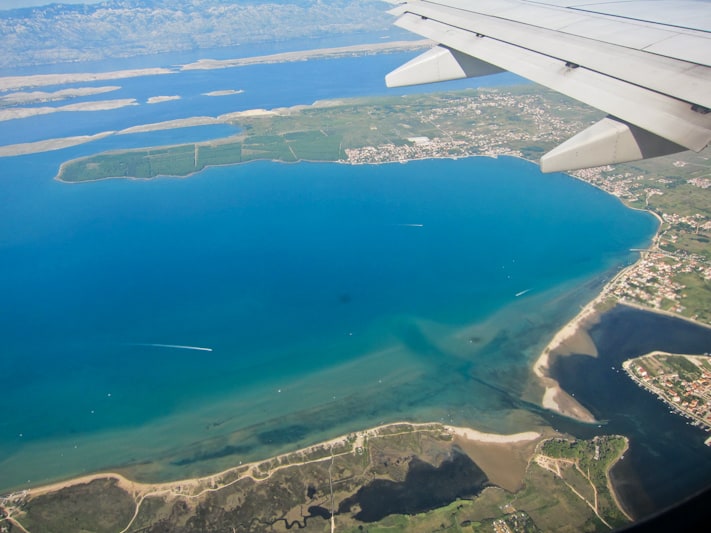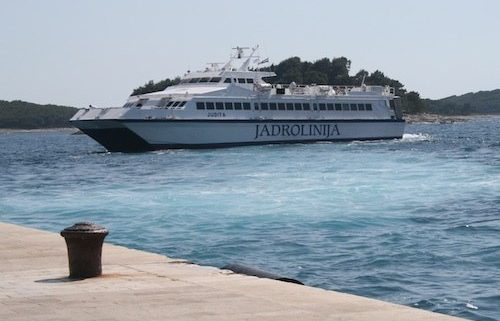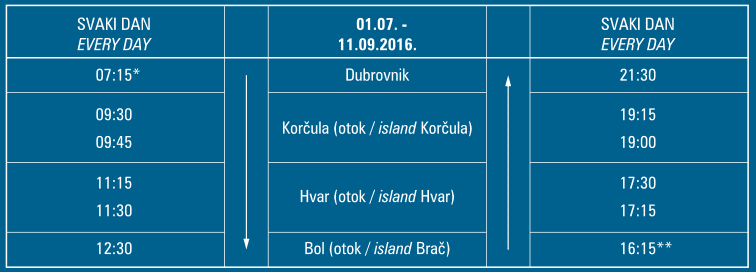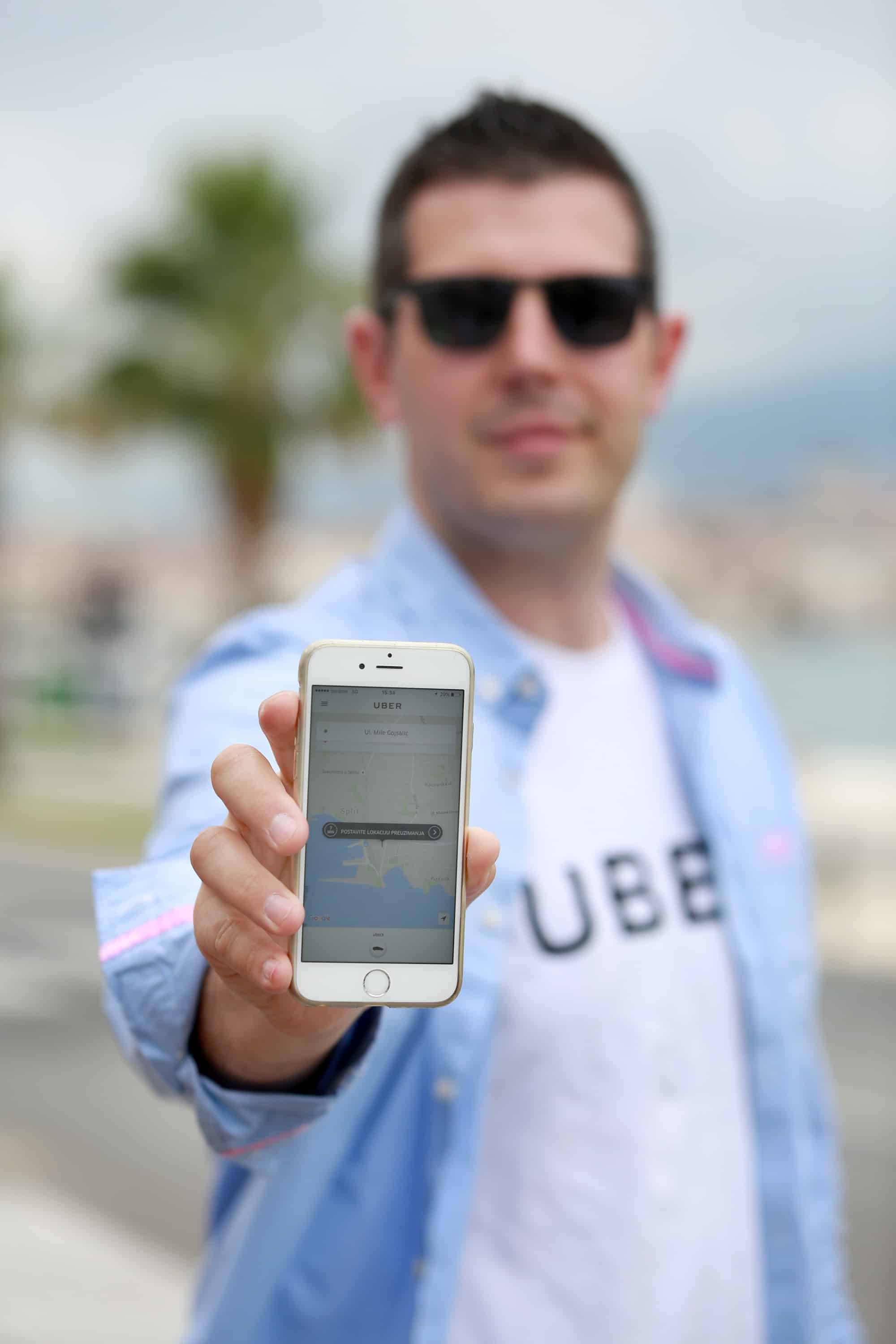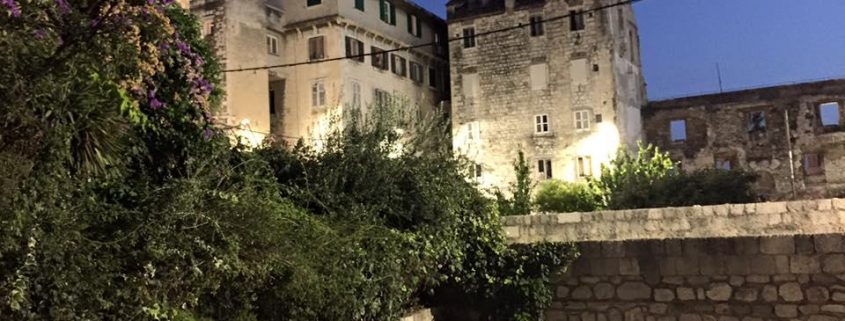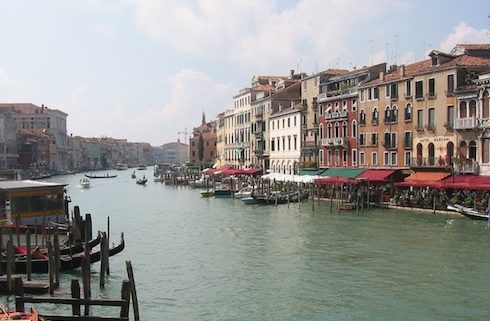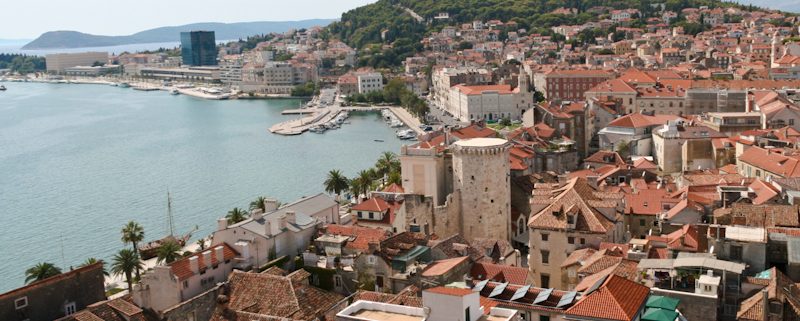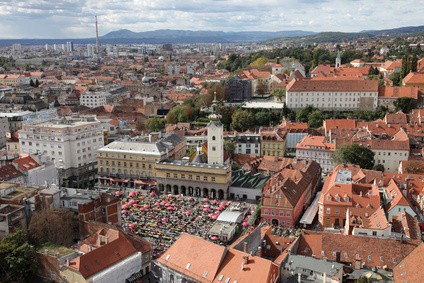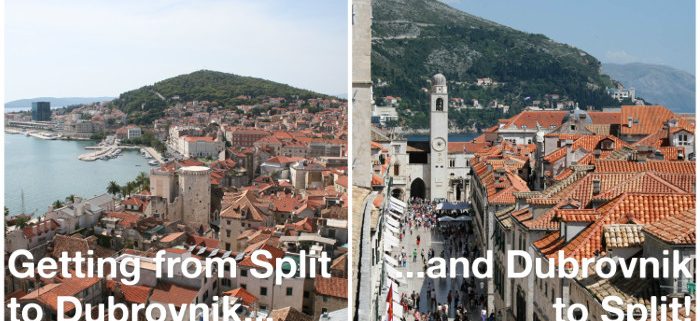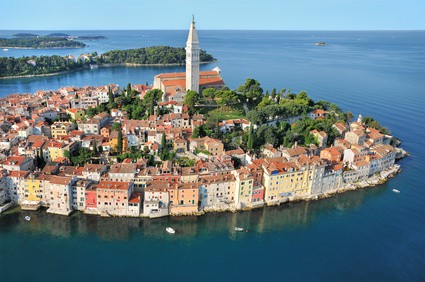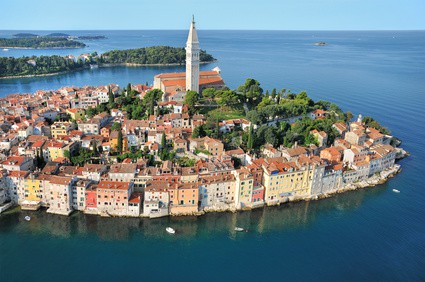Following on from part one of Neil Killeen’s excellent report of Dalmatia in September here’s the second part of his travelogue. Here, Neil recounts his experiences of visiting and staying on/in the island of Hvar and Split, exploring the sights of both destinations.
Dalmatia in September 2015 – Part 2
by Neil Killeen
Our next stop was Hvar town. We decided to take one of the day trip boats to Jelsa (their first stop) on Hvar island and then catch a bus. The alternative was bus to Split and ferry to Hvar. This was a bit quicker and nicer we thought. So you pay about 100 kuna I think it was for the transfer to Jelsa. That was our first Adriatic boat trip.
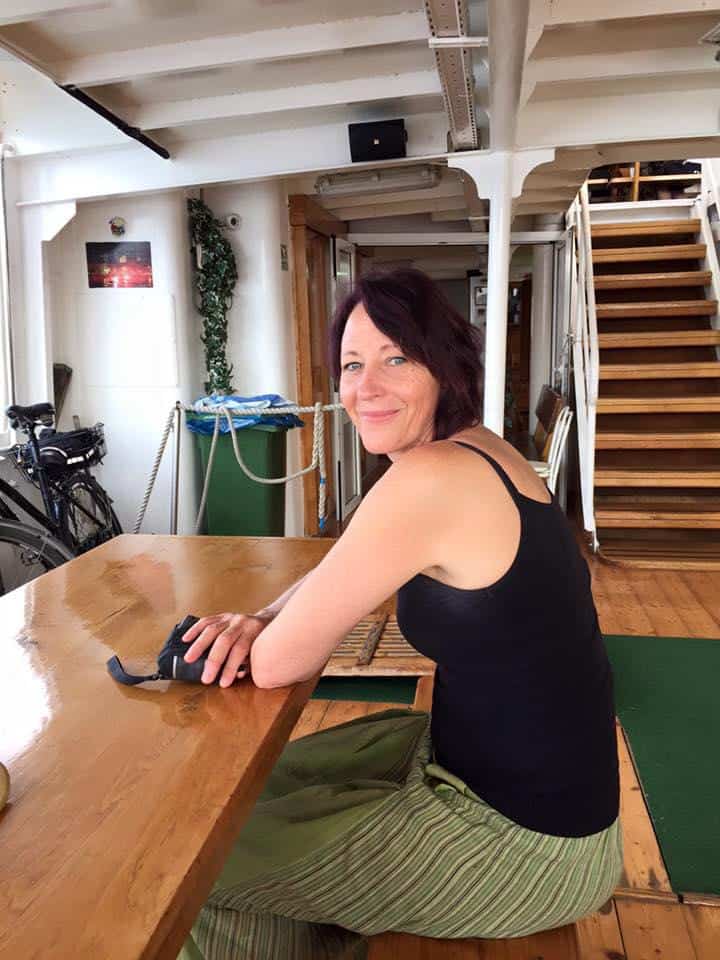
On the way to Jelsa
At Jelsa harbour it was not at all obvious where the bus station was and we didn’t have a lot of time to find it. Google was not helping (and by the way my “covermore.com” global sim card worked well in all of Croatia – it came with my travel insurance). However, a very helpful man selling stuff in an outdoor stand gave us directions and we found it OK. It’s about a 10 min walk from the harbour. The bus trip was really pretty around the western coast of Hvar. Some guy in a Mercedes was not happy with the bus driver and chased about for a while (we didn’t feel any collision so we really don’t know what that was about).
At Hvar town our host and sister kindly collected us from the bus station. Nothing is very far away, but when you first arrive, finding places in the often multilply-named windy and hilly Croatian streets can be a bit tricky. We had a nice sea view from our accommodation.
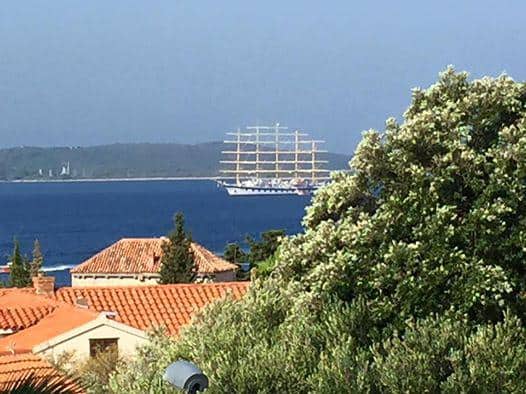
View from Hvar apartment
It turned out we were just a few minutes walk to the nicest beach in Hvar, and from there around to the harbour. The demographic in Hvar is a bit younger and upmarket. As you head north from Dubrovnik to Split I think there is a general evolution to a more lively environment. We happened across an Orson Wells exhibition there. It turned out his last companion, the actress Oja Kodar, is Croatian. Her met her in Hvar in 1967 working on a film he never finished called “The Deep”. She lives now near Split.
There is an old fort above the town which is well worth walking up to (it’s a nice walk). Its origins are late BC with much building and rebuilding over the next 2000 years as Hvar’s strategic importance waxed and waned. In the fort is a really interesting display of pots and other relics from a ship wreck dated to 2nd century BC. How cool is that!
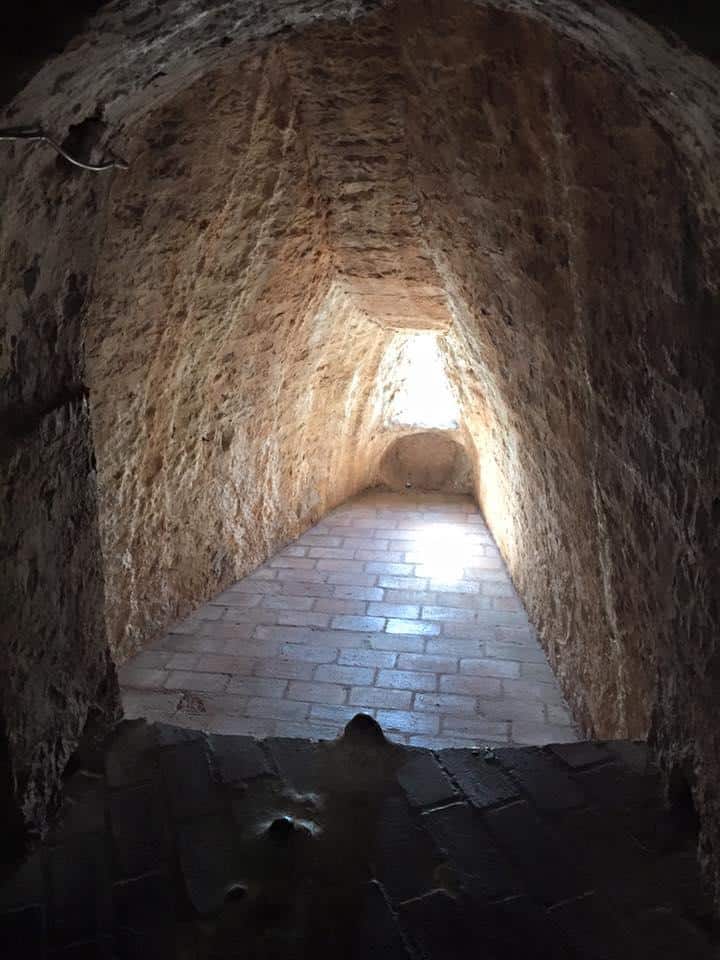
Prison Cell in the Fort
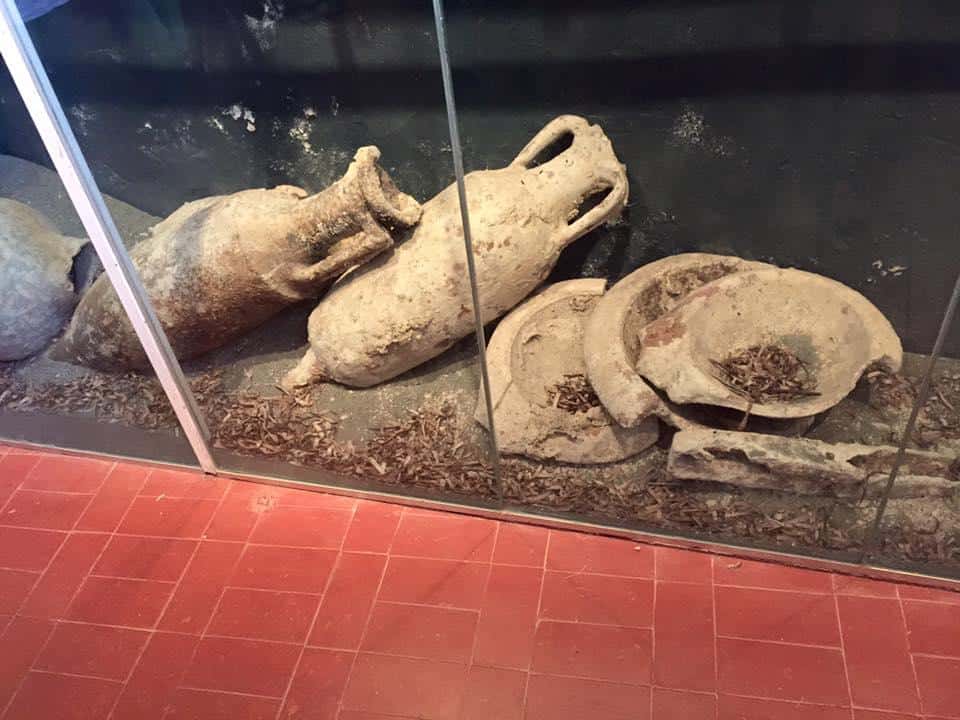
Pots from 2nd century BC ship wreck
We couldn’t go to the green caves and other marine destinations, as it was a bit too windy. I think the operators were all a bit relieved to have a day or two off! Most nights there was music in the main town square. We enjoyed a band and singer who performed energetically and well for a couple of hours. We even had a little dance (Salsa) in the square to some of the music to enormous acclaim from some of the other listeners (but see Split!).
From Hvar we took the fast cat to Split. Our host met us at a church near the harbour and took us to the apartment. Nice and close to the main part of the city at the harbour. Split is a fabulous city, although, as a short-term tourist I think we get a rather protected slice of life. Split is especially famous for its Roman palace founded in the 4th Century. The emperor (Dicolesian I think was his name) was very unusual because he retired still living. Almost all of the Roman emperors were assassinated. I think it was the third century which saw 100 emperors come and largely go. (I learned this in a Rome museum).
Ri decided to have a sleep and I went out to explore the day trip options. One of the spruikers was a young woman, with whom, for some reason, I immediately found myself deeply engaged in a conversation about the history of Split and the Balkans in general. After 45 minutes she declared she really didn’t want to sell me day trip! She advised me that we should do one of the palace tours with a certain company, so we did. The palace is amazing. It’s large and is still lived in. It’s seen 1800 years of cultural and architectural change, and that’s all charted through its living buildings. You can see the edge of a roman road inside of the bank for example!
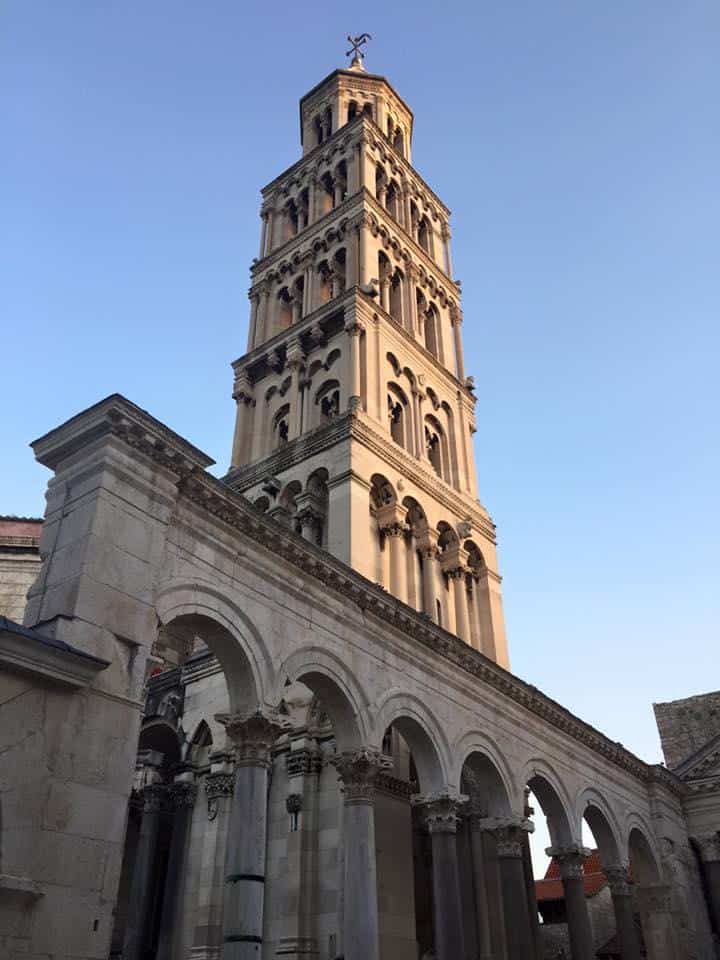
The Bell Tower in the Palace
We experienced more traditional Croatian music here. This time it was a military band and all male-choir. To be honest it was a bit dull. The musicians were very polished (and look great in their lovely all white uniforms) but the music was very ‘samey’ (too much of anything is not a good thing) with endless Croatian folk songs. Worse, although the choir was some 15 strong, the arrangements weren’t very interesting with virtually all the men singing the same part in unison. I happen to sing in a choir, so I know I’m picky, but I really felt their talent was not being used as well it could have been. However, the locals appeared to be loving it, so we were happy to leave them to their fun.
Now the main square inside the palace under the bell tower is a fabulous place to be in the summer evenings. There is a Café that opens onto the square, and they hire musicians to perform every night. People sit around on the steps and the waiters zoom around making a fortune on drinks! Note, it is unwise to order “a beer”. What you will get is a very large vat of beer. If you want one that won’t last a week, ask for a “very small beer” please. We trotted out our little Salsa act here too – the musicians were brilliant every night; usually duos with really varied repertoire. One evening, a young couple got up to dance. The man was dressed in fairly ordinary ‘travel clothes’, but the woman was very elegantly dressed. Then they danced. Phew. It was HOT. They didn’t actually do a lot (in terms of ‘moves’) but their ‘moving’ was really sexy and beautiful to watch. We didn’t get up to dance again after that, you can be sure!
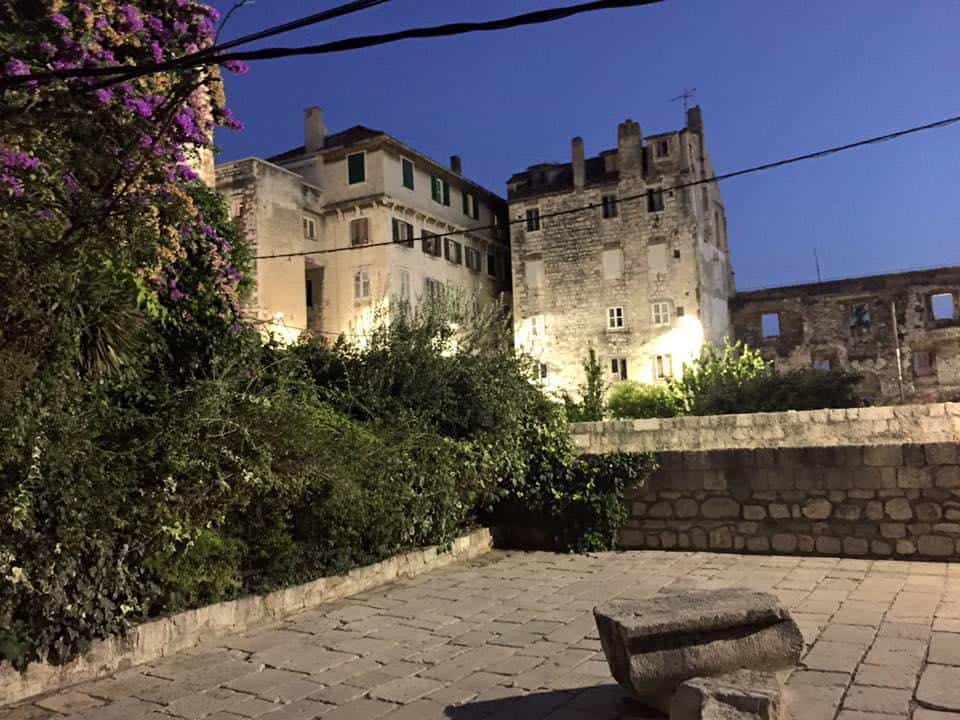
More of the palace
We finally managed a day trip from Split. We went to the ‘blue lagoon’. The trip consisted of 1) going to a bay on an island and jump in and swim, 2) going to another bay on another island, where the water was slightly blue-er, jump in and swim. The boat had a couple of face masks which you could use to admire the seaweed and a few desultory fish, 3) go to a small town on another island and have a really bad lunch (we reckon it had been sitting on the bench a long while). Thanks heavens I did not select ‘fish’ as the fish was whole oily Mackerel (eeeeew), 4) wander about this tiny place (and it was REALLY hot) with absolutely nothing to see, 5) go back to Split. Actually, despite not being the most awesome experience (it wasn’t very expensive), it was a nice lazy day out on the water. We made friends with a couple of other folks over “lunch” and chatted with them for a while also.
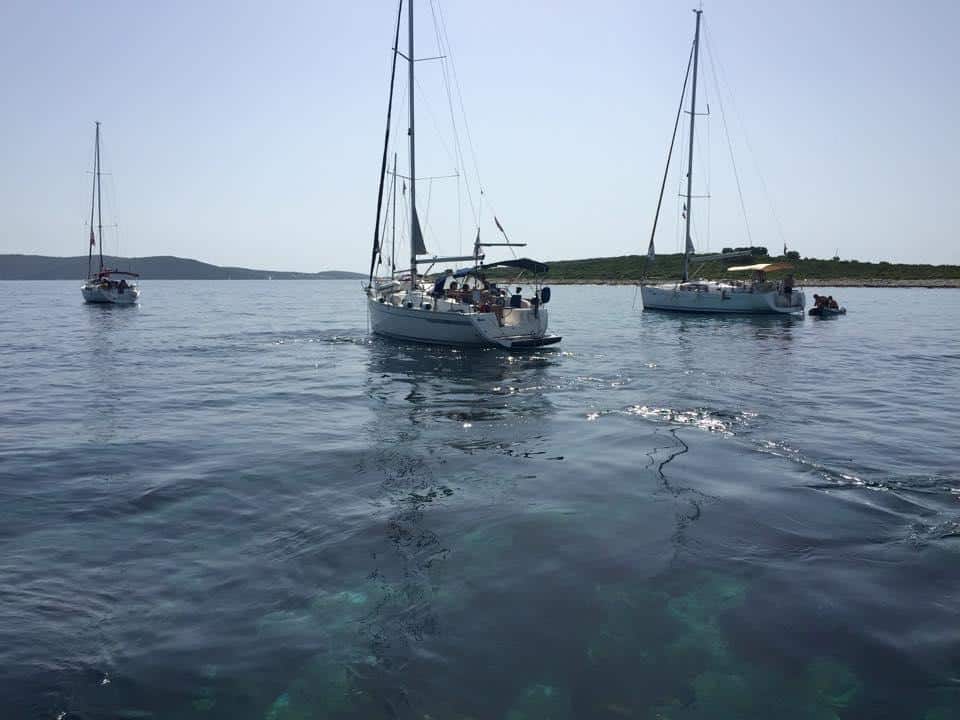
The ‘blue lagoon’
On our last day, I gave my partner, Ri, control. Normally I seem to be the one who ends up deciding where we go, and how we get there and all that stuff (I don’t particularly want to, it just works out this way). Anyway it was her turn I decided; I was soon not sure about this decision as we walked all the way around the peninsular to the west of the city (mostly through the Park Suma Marjan). However, It was a lovely day out. First we walked up to the lookout (near the cemetery).

Panorma from the Split lookout
Along the walk we encountered a beautiful tiny old church from the 13th Century. Although we couldn’t go in, there was a hole in the door through which I could take a good picture. The very basic interior of this church rather contrasted with the excessive basilicas of Rome a few days later.
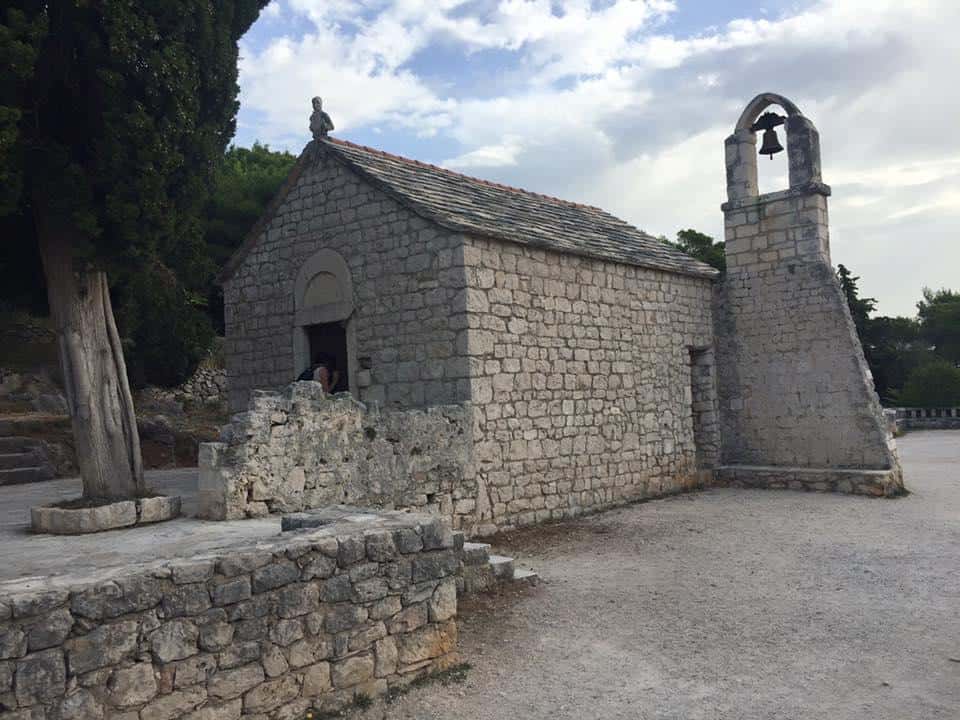
13th century (1219) church
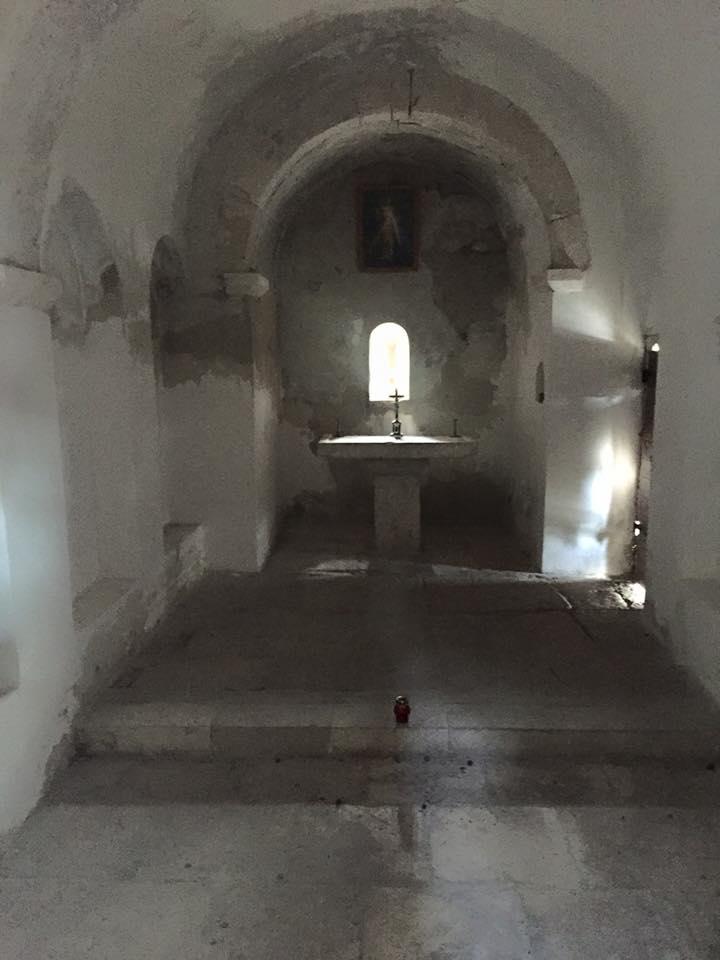
13th century (1219) church
We also encountered these very cool dwellings built directly into the cliffs. The occupants must have lived incredibly austere lives. We didn’t manage to learn anything else about when these were built and occupied.
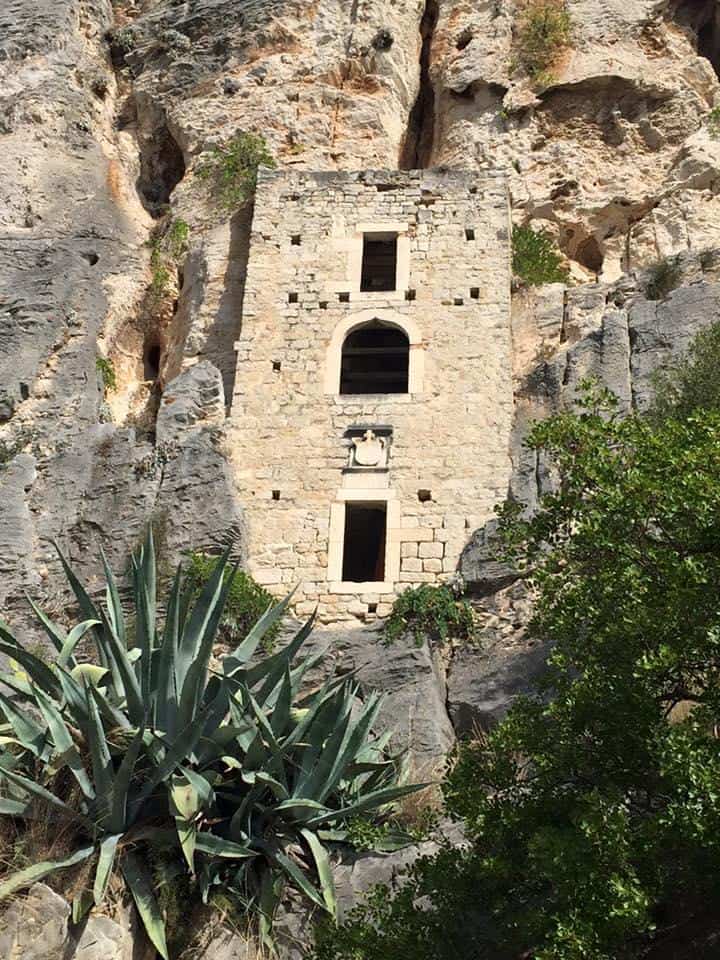
Rock-face dwellings in Park Suma Marjin
From here we wended our way down the hill to a beach that we had been eyeing keenly for a while. We had brought some sandwiches along with us and scarfed them down soon before finding our way to the beach. I was a bit surprised to learn that this was Ri’s very first peanut-butter and cucumber sandwich (I made them). These are a staple of mine and I was sure that in the last decade since we met one would have come her way….
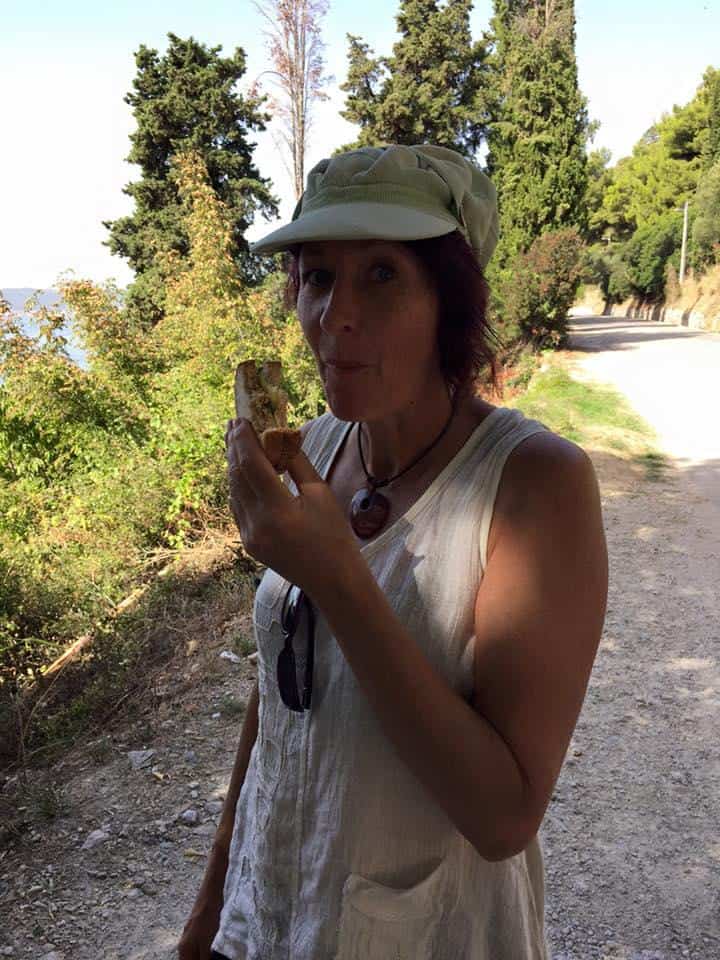
Mmmm yummy
After a very nice cool swim (it was pretty hot this day) at the beach, we headed onwards along the coast back towards Split. This took us to the famed Gallery Mestrovic, the legacy of the famed Croatian artist Ivan Mestrovic. You can read the history here in Wikipedia. The gallery is wonderful and there is also a piece by Rodin, who supported Mestrovic. Here was where I had another nice encounter with a local. I always get through the galleries faster than Ri (her artists’ eye has a lot to see), so I was chatting with the gentleman checking tickets at the front door. Again I had found another person with a passionate interest in history and culture. We had a long discussion, taking in most of the Balkan political history of the 20th century!
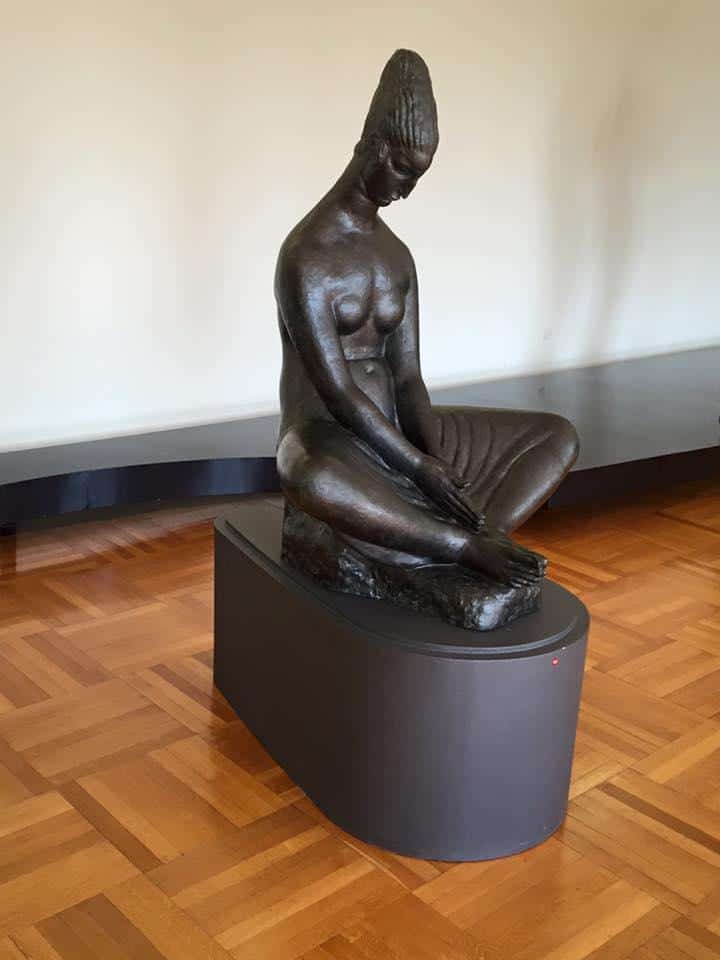
One of the many wonderful casts in the Gallery Mestrovic
From the gallery (and the small chapel on the other side of the road with Mestrovic wood panels) we headed on to another small beach for another dip.
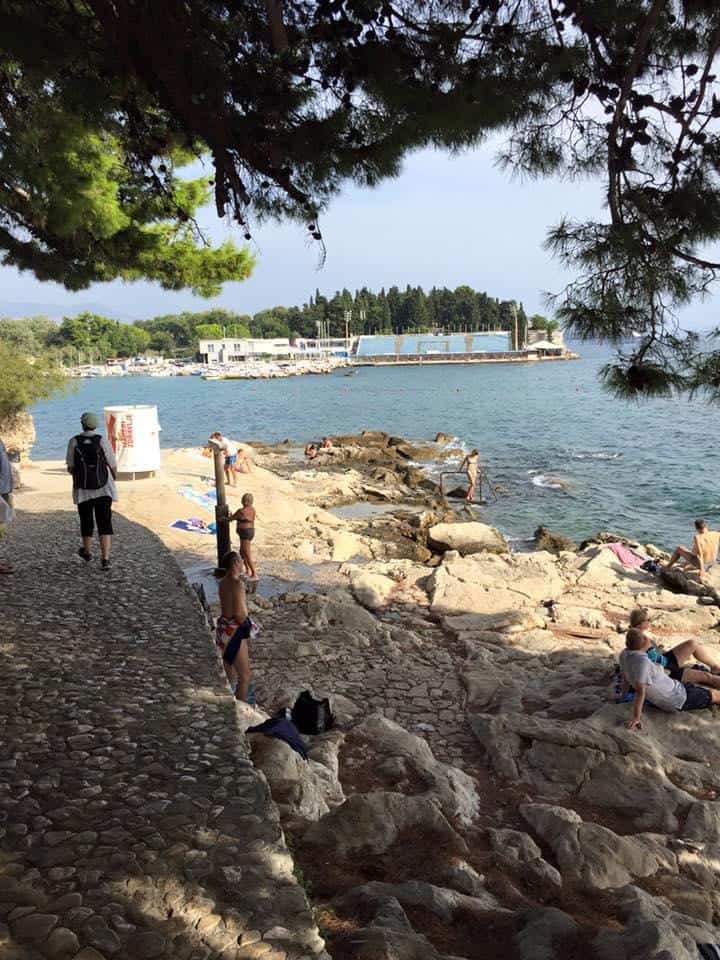
Our last beach swim in Split
Finally, we made our way back to the harbour (the fancy end). There were many amazing yachts here. The most impressive was the “Polar Star” which you can see in the figure. I later googled it, and discovered that it cost 60 million Euros to build, and costs 380,000 Euros per week to charter (crew of 17, 12 passengers)! Some things are really a long way out of reach and you really wonder how that’s within anybody’s reach (or philosophy).
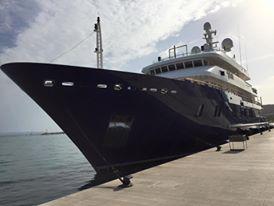
The Polar Star in Split
Finally, Ri decided to take a “short cut” back to our apartment. Here is the rather daunting view of that short cut. On arrival back at our apartment, our feet needed a lot of attention, so foot massages were again the order of the day.
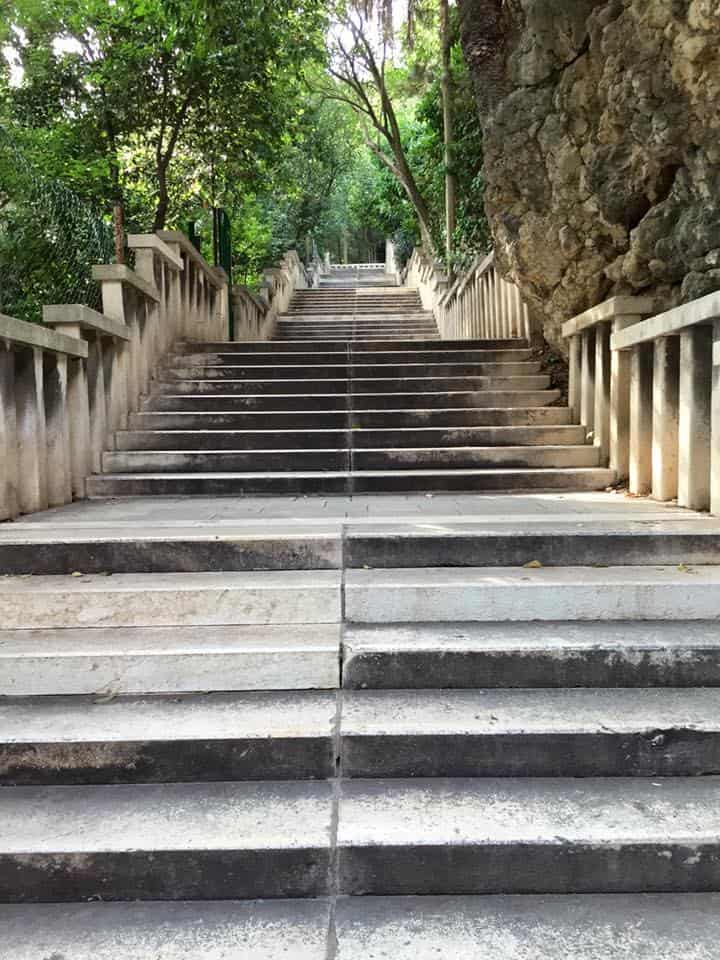
The short cut
We took the airport bus (the other end of the harbour), and flew to Rome with Vueling airlines. We had a bit of a worry when I could not find our booking online. It turned out that this was because of some confusion between the parent company Iberia and Vueling. When our booking was made, our tourist agent (FlightCentre in Australia), only supplied codes for Iberia. But these did not work on the Vueling site (nor on the Iberia site). Anyway, there is a 24 hr hotline for FlightCentre, and the consultant resolved it efficiently for us (she had to call Iberia to sort it out). I hope FlightCentre have now changed their process!
So off we went to Rome, but that must be a story for some other website – do you run a Roman website also Anna?
